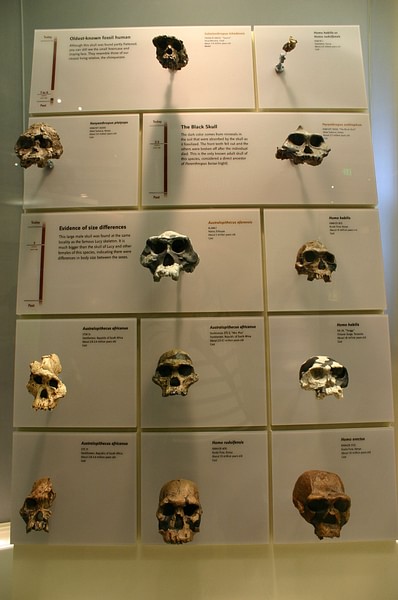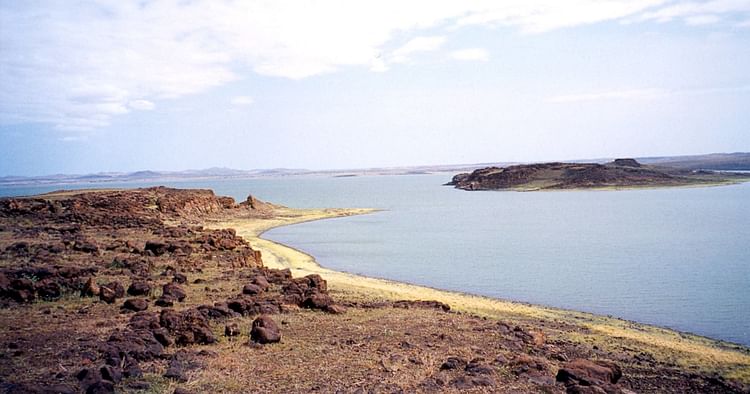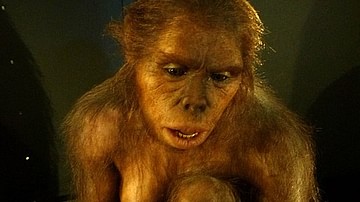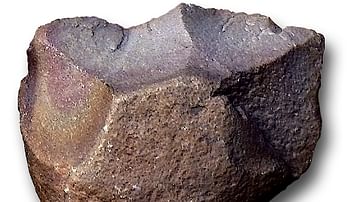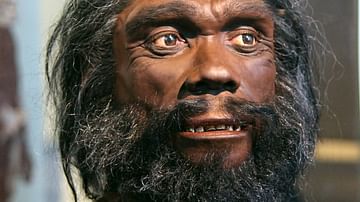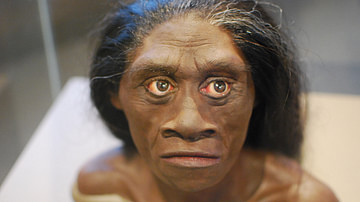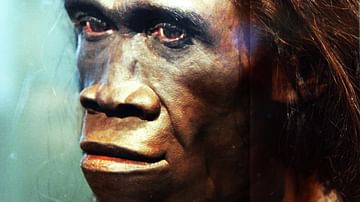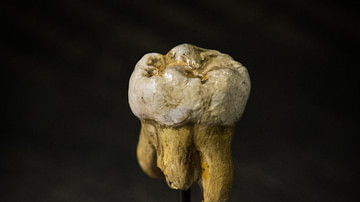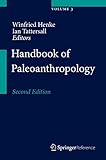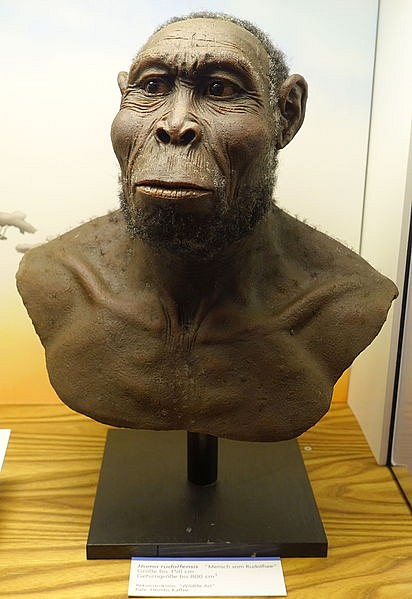
Homo Rudolfensis is an early human species that lived in East Africa between c. 2.5 and 1.8 million years ago. It is known from a handful of skull, jaw and teeth fragments that remind alternatingly of Homo or of Australopithecus and that piece together to reveal a relatively large-brained, flat-faced species with robust teeth capable of chewing through tough plants.
The associated dates mean that Homo rudolfensis was around at a time that saw the emergence of our genus of Homo – a time still very much shrouded in mystery as the fossil remains are scarce, and thus, successfully building jigsaw puzzles with said remains is very difficult. This is reflected in debates that rage regarding the relationship between Homo rudolfensis and its close contemporary, Homo habilis, and the fact that some scientists favour lumping both into one species instead. It is moreover unclear whether Rudolfensis and Habilis have indeed reached their proper place within Homo, or whether they might fit better within Australopithecus instead.
Discovery
East Africa was a pivotal stage for the early years of human species, and palaeoanthropologists Louis and Mary Leakey and their sons played a central role in its discovery as such. Already in the 1950s, their efforts at Olduvai Gorge in Tanzania had uncovered early stone tools belonging to what they termed the Oldowan industry, and in the 1960s, their son Jonathan found bones and bone fragments that the Leakey team assigned to the then-new species Homo habilis, which became the earliest member of the genus of Homo known at the time.
A research project that focused its attention on northern Kenya, along the shores of Lake Turkana, would further change the picture of early Homo. Richard Leakey – Louis and Mary's son – led fieldwork there in the 1970s, and in 1972, at Koobi Fora, one of his team members, Bernard Ngeneo, discovered an interesting collection of skull fragments.
Once pieced back together, the face that greeted the team was striking: it had a steep forehead, a flat face, and a wide palate – seemingly a mixture of Homo and Australopithecus features that did not match anything else known at the time.
The skull, known scientifically as KNM-ER 1470, was initially dated to c. 2.4 million years old (later adjusted to c. 1.8 million years in 1989, and then to c. 2 million years in 2013) and assigned by Richard Leakey first to an indeterminate Homo species but then to Homo habilis. However, since the skull's features differed quite a bit from known Homo habilis specimens and its cranial capacity was larger, it sparked a whole lot of bickering and arguing in the scientific community.
Already in 1978, only two years after Leakey assigned the skull to Homo habilis, the Russian scientist Valerii Alexeev proposed giving the new skull the lead role in its own species, instead, naming it Homo rudolfensis (after Lake Turkana's old name, Lake Rudolf). However, the English version of Alexeev's paper did not appear until 1986, and, since not much data was put forth, the species name of Homo rudolfensis was not accepted by the scientific community until the early 1990s. Even so, the debate has continued, though, just like Homo habilis, rudolfensis' mixture of features does not make it a clear match with either Homo or Australopithecus.
Appearance
Besides the KNM-ER 1470 skull, we have a few other clues that allow us to piece together what its face would have looked like, though not its body; no bones belonging to body parts other than the skull have been solidly attributed to Homo rudolfensis. More skull and jaw fragments were found at Koobi Fora, near where KNM-ER 1470 was discovered, while teeth were discovered in the Omo river basin in Ethiopia, and a jaw was found in the Chiwondo Beds in Malawi. The material dates to between 2.5-1.8 million years ago, marking it as a direct contemporary of Homo habilis (dated to between c. 2.3 million and 1.5 million years ago).
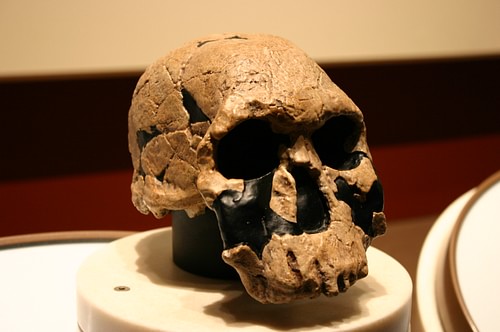
What greets us is a species with a larger brain case, flatter face, and larger teeth than Homo habilis. Its forehead is fairly steep and leads to a domed skull – both characteristics of the genus Homo. The brain that sits beneath this domed skull comes in at an estimated 752 cm³, although a 2008 study led by Timothy Bromage suggests reducing this to 700 cm³ instead (which is still a whole lot larger than general Australopithecus brain sizes which tend to come in between 387 and 560 cm³). Reminding us instead of Australopithecus is the fact that the middle of Homo rudolfensis' face is broader than the upper part and that the palate which sits below is shallow, broad, and short. Its canines and incisors are large, and its molars show more relief than what can be seen in Australopithecus.
From the few skeletal bones that are sometimes mentioned in connection with Homo rudolfensis, only one, at this point in time, seems capable of earning the 'maybe' label: KNM-ER 1472, a femur from Koobi Fora dated to c. 1.9 million years ago. It is normally attributed to Homo habilis but since it is quite a bit larger than any other Homo habilis femurs, it does not sit quite right and might fit better within Homo rudolfensis, instead. However, this has merely been suggested by some researchers and has not been widely accepted.
Classification Caveats
Despite the above-mentioned differences between the skulls of Homo rudolfensis and Homo habilis, the fragmentary nature of material belonging to early Homo species dating to this time (c. 2.5-1.5 million years ago) leads to a bit of a jumble when it comes to classifying this material, even if differences can be observed. The relationships between the various suggested species around this time, as well as who their ancestors were, are still poorly understood. Since we do not have much fossil material assigned to Homo rudolfensis, it becomes quite difficult to make assumptions about the species as a whole, as some variation within species is to be expected.
This is why to this day, researchers have not all managed to agree on whether to keep Homo rudolfensis and Homo habilis as two separate species or lump them both together into one, more varied species. In the latter case, the KNM-ER 1470 skull and other skull fragments normally assigned to Homo rudolfensis would then be seen as the males of the species, whereas the smaller skulls normally assigned to Homo habilis could be females. Differences in size and appearance between males and females – sexual dimorphism – is common in a lot of animals and likely occurred in early Homo, too. However, as archaeologist Manuel Will notes, trying to assess the sex of such highly fragmentary remains is nearly impossible, and there is no reason to expect grouped fossils to show systematic bias towards any sex. At this point in time, most scientists are in favour of upholding the separation between the two species, although they do not all agree on exactly which specimens should be assigned to which species.
Because of its interesting mix of features reminding alternatingly of Homo and of Australopithecus, there is disagreement about whether rudolfensis deserves its place within the genus Homo, or whether it would fit better within Australopithecus. The same question applies to Homo habilis, too. While most scientists back the current status of both – in Homo, at the base of the Homo tree – it does stretch the definition of Homo a bit. However, the same can be said if rudolfensis and habilis were to be added to Australopithecus. A third option has even been suggested for rudolfensis: anthropologist David Cameron feels it fits within Kenyanthropus, an older genus whose only known species, Kenyanthropus Platyops, lived a little over 3 million years ago. However, other scientists have deemed this option as unwarranted at present.
It is clear that early Homo (or late Australopithecus) is a bit of a mess. Hope is on the horizon, though: in recent years, many new, important discoveries have been made when it comes to early humans, and, if more Homo rudolfensis material were to be found, we will be better able to connect the dots regarding its ancestry and place in the broader evolutionary story.
Habitat & Diet
Even if there is a lot we do not know about Homo rudolfensis, at least the locations where remains that are normally assigned to this species have been found – the Chiwondo Beds in the Malawi Rift in northern Malawi, Koobi Fora in Kenya, and the Omo river basin in Ethiopia – might be able to tell us something about its habitat(s), diet, and way of life. Furthermore, since early Homo is at present such a jigsaw puzzle lacking far too many pieces, and because there is so much discussion about which material to assign to which species, it is worth looking at the overall collection of early Homo fossils. Early Homo specimens dating between c. 2.8 and 1.6 million years ago are known from other places such as Hadar in Ethiopia, Chemeron as well as West and East Turkana in Kenya, Olduvai in Tanzania, and Sterkfontein, Swartkrans, and Drimolen in South Africa.
Between c. 2.8 and 2.5 million years ago, the African climate changed and saw the development of swathes of open woodland and grassland savannah containing plants better adapted to cooler, more arid conditions. Researchers argue that these conditions would have favoured species with bigger, more robust teeth, as they could more successfully chomp down on tougher, more fibrous fruit, leaves, and grasses. Homo rudolfensis, with its relatively large molars (though not as large as those of, for instance, robust Australopithecines such as Paranthropus boisei), would have been at least decently adapted to deal with such foodstuffs.
At the same time, there were fast and extreme environmental shifts that would have required flexibility in order to survive. In East Africa, tropical forests clung on even through periods of droughts, and we know that Homo rudolfensis also survived in the relatively cool and wet wooded savannah that was the Malawi Rift around 2.4 million years ago where it ate so-called C3 plants. All in all, the data points to early Homo, including rudolfensis, having been dietary generalists that were able to survive in various kinds of habitats. Even so, differences in tooth wear between Homo rudolfensis and Homo habilis indicate they likely had different diets.
We know that Homo habilis used tools, as tools of the so-called Oldowan tool industry have been found alongside Homo habilis bones. Although Homo rudolfensis is not directly associated with any tools, Oldowan tools date to between 2.6 and 1 million years ago and thus overlap not just with Homo habilis but also with Homo rudolfensis and Homo erectus, as well as with late Australopithecines. It is certainly possible that all of these may have used stone tools to some varying extent. Most scientists agree that Homo was probably the more habitual toolmaker of this bunch. Oldowan tools were made by striking flakes off a stone core with another stone and may have been used for such things as butchering, woodworking, cutting, digging, and cracking (bones, to get at the marrow, or skulls to retrieve the brain). These may have been activities that played a role in Homo rudolfensis' lives. Neighbours of Homo rudolfensis during its time on this earth would not just have been Homo habilis but also Paranthropus boisei, Australopithecus africanus, and Homo erectus.
Conclusion
It is clear by now that Homo rudolfensis can be used as a perfect illustration of the little we know definitively about the early days of the genus of Homo (or the late days of Australopithecus). Like Homo habilis – its close contemporary and main partner when it comes to featuring in classification debates – the few Homo rudolfensis remains we have unearthed so far show an interesting mix of both Homo and Australopithecus features. Though there are certainly differences between Homo rudolfensis and Homo habilis, the ongoing debate about whether this may simply be due to variation within a species may only be put to rest conclusively if we find more fossils.
However, the past decade or so of palaeoanthropology has shown that the story of hominin evolution is growing increasingly complex and fluid. We know from DNA retrieved from more recent species such as Neanderthals and Denisovans that interbreeding within species would likely have been the norm rather than the exception, at least during those times. As such, hominins weaved in and out of contact with each other and influenced each other's evolutionary pathways, like a braided stream (rather than a strict evolutionary tree in which the branches never rejoin each other after branching off). The same may very well be true for the earlier, multifaceted time in which late Australopithecus and early Homo, including Rudolfensis, lived.

